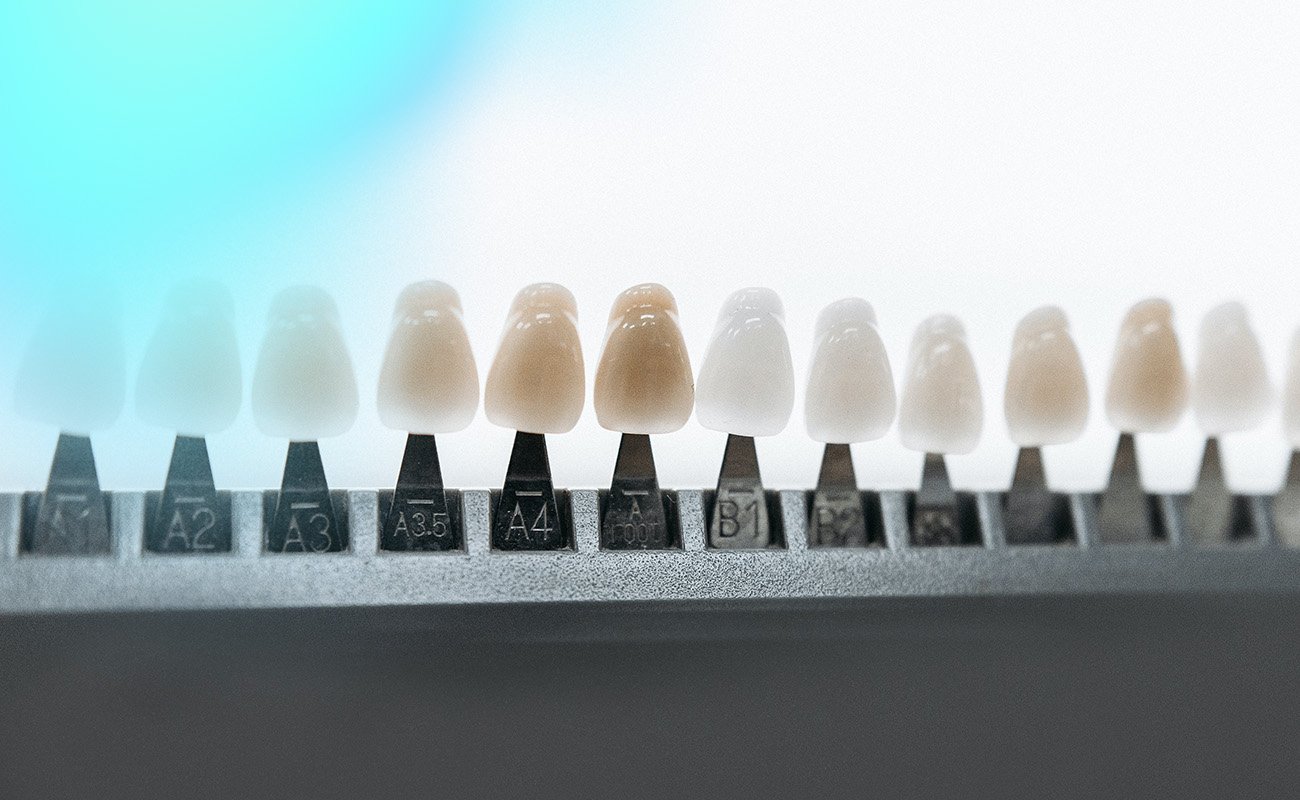When it comes to improving the appearance of your teeth, veneers have long been a popular option for achieving a perfect, bright smile. However, veneers can be expensive and may not be a viable option for everyone. Fortunately, there are other cosmetic dental treatments available that can provide similar results at a more affordable price point.
From teeth whitening to bonding, this article will explore some of the cheaper alternatives to veneers, comparing their effectiveness, durability, and cost. Whether you’re looking for a quick fix or a long-term solution, we’ll help you find the best option to enhance your smile without breaking the bank.
What Are Veneers?
Let’s start by understanding what veneers are. Veneers are thin, custom-made shells crafted from porcelain or composite resin that are designed to cover the front surface of teeth. They are used in cosmetic dentistry to enhance the appearance of one’s smile by improving the color, shape, size, or length of the teeth. Veneers are bonded to the front of the teeth, creating a natural-looking and durable solution for various dental imperfections such as stains, chips, gaps, or misaligned teeth.
The process of getting veneers typically involves a few visits to the dentist. The first visit usually includes a consultation to discuss the desired outcome and may involve taking impressions of the teeth. Subsequent visits focus on preparing the teeth for the veneers by removing a small amount of enamel and placing temporary veneers, followed by the final application of the custom-made veneers. This process is minimally invasive and can dramatically transform the appearance of one’s smile, offering a long-lasting and aesthetically pleasing result.
See our article: Teeth Veneers Pros and Cons.
Worth Knowing
The study published in the Journal of Dental Research shows that patient factors, rather than dentist-related factors, significantly influence the longevity of porcelain veneers. It was found that 53% of these veneers remained intact and did not require any re-intervention for up to 10 years.
Cost of Veneers
Now that we understand what veneers are, let’s explore their cost. The price of veneers is influenced by various factors, such as the choice of material, the geographical location of the dental practice, and the complexity of each case. Additionally, there may be additional expenses such as fees for consultations, X-rays, and the veneer placement procedure.
On average, veneers can range from a few hundred to several thousand dollars per tooth. Porcelain veneers typically command a higher price compared to composite resin veneers due to their enhanced durability and natural appearance.
Cheaper Alternatives
Now, let’s turn our attention to exploring some alternative options that offer a more budget-friendly approach compared to traditional veneers.
Snap-on Veneers
Snap-on veneers present a more affordable alternative to traditional dental veneers, aimed at enhancing the aesthetic appeal of one’s smile without the significant costs and invasive processes associated with standard veneer procedures. These veneers are crafted from a dental resin or a flexible, durable polymer, providing a thin, custom-fit shell that temporarily clips over existing teeth.
One of the key advantages of snap-on veneers is their cost-effectiveness, eliminating the need for dental drilling or permanent changes to the natural teeth. They are also removable, allowing for ease of cleaning or removal during meals.
However, there are drawbacks to consider. Snap-on veneers may not deliver as natural-looking or enduring results as traditional veneers, and some users might find them bulky or uncomfortable. Imperfect fittings can also impact speech and eating. Moreover, this type of veneer is not intended for everyday use and should be worn on an ad-hoc basis when required.
The cost of snap-on veneers can be as little as $200 for one arch depending on the brand and model you choose.
Worth Knowing
The Department of Health and Human Services reports that in 2018, dental care expenses in the United States reached almost $136 billion, accounting for 3.7% of the nation’s total healthcare spending.
Dental Bonding
Dental bonding offers a cost-effective and minimally invasive alternative to traditional veneers, catering to minor cosmetic dental imperfections. The process involves the application of a tooth-colored composite resin onto the teeth’s surface, which is then sculpted into shape and solidified using a specific type of light. This resin is a robust plastic material that can be finely tuned to match the natural hue of your teeth, ensuring a smooth and inconspicuous finish.
The benefits of dental bonding are manifold: it is more affordable than many other cosmetic dental procedures, requires the removal of less tooth enamel than veneers or crowns, and can usually be completed within one dental visit. However, it’s important to consider the drawbacks. The composite resin used in bonding is not as resilient as natural tooth material, making it more prone to chipping, staining, and wear over time. Furthermore, while dental bonding can greatly enhance the appearance of one’s teeth, it may not reach the same level of aesthetic perfection or durability offered by veneers.
The average cost of dental bonding typically ranges from $300 to $600 per tooth, depending on various factors like location or material used.
Worth Knowing
Research featured in Clinical Oral Investigations reveals that four years post-procedure, 92.8% of dental bonding treatments remain in excellent condition. The study assessed various aspects such as color match, fit at the edges, surface texture, edge discoloration, wear, shape retention, and cavity prevention, all of which maintained high standards after four years of clinical observation.
Teeth Whitening
Teeth whitening is a cost-effective alternative to veneers. This cosmetic procedure involves the application of bleaching agents, typically containing hydrogen peroxide or carbamide peroxide, to the surface of the teeth. These chemicals work by breaking down stains and discoloration, resulting in a noticeably whiter smile.
The advantages of teeth whitening include its affordability compared to more invasive cosmetic dental procedures, the relatively quick and painless process, and the ability to perform it either in a dental office or at home with a professional-grade kit. However, teeth whitening is not without its downsides; it may not be effective for all types of discoloration (such as intrinsic stains or discoloration from certain medications), can cause tooth sensitivity or gum irritation in some individuals, and the results are not permanent, often requiring regular touch-ups to maintain the desired level of whiteness.
The cost of teeth whitening can vary from product to product but on average one should expect to pay from $200 to $1,000 per application.
Worth Knowing
Teeth whitening is the most popular dental procedure in the U.S., accounting for 32% of in-office practice.
See our reviews of the best whitening products
Moon Whitening Device is a rapid and effective teeth-whitening solution, capable of achieving up to 12 shades of whitening in two weeks with five-minute daily sessions. It’s user-friendly, featuring a lightweight, wireless, and water-resistant design, and comes with peppermint-flavored dissolving whitening strips. The device is gentle on tooth enamel and is clinically proven and dentist-approved. See our review of Moon Teeth Whitening Device.
- LED LIGHT TEETH WHITENING KIT. MOON’s easy to use Teeth Whitening Device uses a fast-acting LED light and simple, no-mess dissolvable teeth whitening strips to streamline your premium beauty routine for truly noticeable dental results. Make your mouth happy with a brighter, whiter smile and achieve those tooth whitening goals with MOON’s incredible, modern, teeth whitening kit.
Snow Magic Teeth Whitening Strips offer an eco-friendly solution for a brighter smile with their unique self-dissolving feature, eliminating the need for plastic backings. Available in 28 or 56 packs, they come with a 60-day money-back guarantee and are the top-selling whitening product in stores like Neiman Marcus and Macy’s. See our review of Snow Magic Teeth Whitening Strips.
- EFFORTLESS WHITE SMILE: Whiten your teeth using our easy-to-apply and non-slip Snow Magic Strips! Our teeth whitening strips are your on-the-go companions, which you can conveniently place anywhere and use whenever you need to. They are safe for enamel, can help remove stains from coffee or wine, and instantly give you fresher breath with its refreshing flavor.
At-Home Clear Aligners
At-home clear aligners are a budget-friendly and non-invasive alternative to veneers for people looking to enhance their smile by correcting mild to moderate dental misalignments. Made from transparent, medical-grade plastic, these aligners are both robust and comfortable. Unlike veneers, which primarily address aesthetic concerns by covering the front surface of teeth, clear aligners tackle the actual positioning of teeth, offering a more natural and holistic approach to smile enhancement.
The advantages of clear aligners over veneers include their affordability, as they often come at a lower cost than the composite or porcelain materials used for veneers. Additionally, clear aligners are removable and virtually invisible, providing a discreet treatment option without the permanent alteration to tooth structure that veneers require.
However, there are drawbacks to consider. The effectiveness of clear aligners is contingent on the wearer’s discipline in keeping them in for the recommended 22 hours a day, which can be challenging for some. Also, while veneers can provide an immediate cosmetic improvement, the results from clear aligners are gradual, requiring patience over the treatment period. Furthermore, clear aligners are limited to correcting alignment and spacing issues and cannot address color or shape concerns that veneers can.
See our Aligners Vs Veneers Comparison.
See some reviews of the best clear aligners available here:
AlignerCo is a well-known brand that provides an affordable aligner program. Their prices are lower than most other aligner brands, with treatment starting at just $945, which also includes free retainers and a teeth whitening kit.

AlignerCo
The cheapest at-home aligners, with monthly plans, no down payment, and considerable discounts.
Check out AlignerCo AlignersNewSmile is one of the newest aligner brands on the market and is known for its affordability. When you purchase their aligners, you receive an impression kit, whitening foam, aligners, and retainers. This brand also provides monthly payment plans without requiring any initial payments, offers a video call option with a specialist to assist with mouth impressions, and has a user-friendly online assessment process.

NewSmile
Affordable at-home treatment with positive reviews offering superior look and comfort.
Check out NewSmile AlignersByte is a well-known brand that offers a lifetime guarantee for your aligners. This means that if your teeth don’t stay in the desired treatment position afterward, you’ll receive additional impression kits, treatment plans, and sets of aligners at no additional cost to correct any misalignments.

Byte
An affordable option with refundable impression kits, free HyperByte, and a Byte for Life guarantee.
Check out Byte AlignersCandid is a highly regarded aligner product with a treatment approach similar to Invisalign. Unlike the other brands mentioned, Candid doesn’t offer a direct-to-home ordering service. Instead, a qualified orthodontist will assess your eligibility for treatment. The advantage is that you won’t need regular appointments after starting treatment. Candid aligners are suitable for addressing both mild and severe spacing issues.

Candid
A hybrid of in-office and at-home treatment that provides 1-on-1 orthodontist support.
Check out Candid AlignersFrequently Asked Questions
What is the Cheapest Way to Fix a Tooth?
It depends on the issue, but if the tooth is chipped to the gum line a dental professional will likely recommend a dental crown or implant to fix the issue.
For everything else, including misalignments clear aligners are a great option as they offer efficient full arch tooth straightening treatment at a lesser cost than other types of procedures.
What is the Less Invasive Alternative to Veneers?
Lumineers are just like veneers but require none of the invasive treatment procedures. They are also a cheaper treatment option than veneers.
If you are looking for a solution to a malocclusion rather than just an aesthetic issue consider clear aligners as an alternative to veneers.
What Can I Get Instead of Veneers?
For aesthetic alternatives opt for lumineers, dental bonding, or teeth whitening. For repair of malocclusion, you should choose braces or clear aligners.
Can I Get Dental Bonding Instead of Veneers?
Yes, dental bonding is a safer and less invasive option for dealing with chips and staining issues on teeth. Bonding is also a cheaper treatment.
Are Snap-on Veneers a Better Choice than Regular Veneers?
Snap-on Veneers are more affordable than regular veneers and require no invasive treatment procedures to fit them. However, they do not last as long as regular ones and are not as aesthetically pleasing as normal veneers.
Sources
Burke, F. J. T., Lucarotti, P. S. K., Ten-year outcome of porcelain laminate veneers placed within the general dental services in England and Wales; J Dent, 2009. DOI: 10.1016/j.jdent.2008.03.016. Available online at: https://pubmed.ncbi.nlm.nih.gov/18538912/
Demirci, M., Tuncer, S., Öztaş, E., Tekçe, N., Uysal, O., A 4-year clinical evaluation of direct composite build-ups for space closure after orthodontic treatment. Clin Oral Investig. 2015 Dec;19(9):2187-99. doi: 10.1007/s00784-015-1458-8. Available online at: https://pubmed.ncbi.nlm.nih.gov/25802222/
https://www.grandviewresearch.com/industry-analysis/teeth-whitening-market-report
Moussa, D. G., Ahmad, P., Mansour, T. A., Siqueira, W. L., Current State and Challenges of the Global Outcomes of Dental Caries Research in the Meta-Omics Era. Front Cell Infect Microbiol. 2022; 12: 887907. DOI: 10.3389/fcimb.2022.887907. Available online at: https://www.ncbi.nlm.nih.gov/pmc/articles/PMC9247192/



